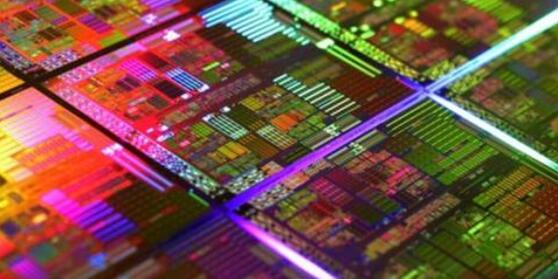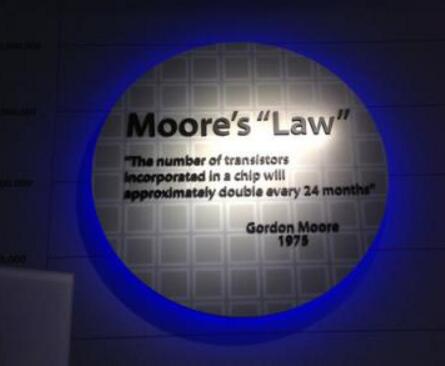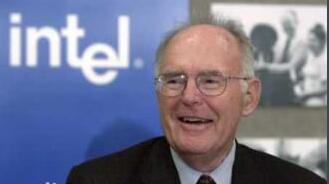Moore's Law may fail, but human desires are not exhaustive. Manufacturers always have to think about how to please consumers, play new gimmicks, and play new tricks. Perhaps this is also the driving force for human progress.
The small partners often lament that the current electronic product replacement speed is too fast, can not keep up with the speed of product updates, Apple 6 just took a few months, 6s will come out. If it is not a local tyrant who is not bad, no one will be impulsive to buy every new product.
Consumer electronics is indeed a magical field. Compared with consumer goods such as clothes, cars and food, electronic products follow a linear upward update logic. A fashion clothing brand, the difference between the new and the old models may only be the appearance style, while the functions of fabrics and warmth are likely to be similar; a food, the difference between the new and the old ones may only be in the packaging and taste, ingredients, ingredients The difference may be small. However, for electronic consumer products such as smart phones or computers, in addition to the improvement of system functions and the updating of appearance technology, there has always been a linear growth law, that is, the running speed of the machine, a mobile phone brand, the new flagship must be more than the old speed. Fast, the processor's process is more advanced, and the number of transistors is more.
This linear growth law is the famous Moore's Law in the scientific and technological world. In 1965, Intel founder Gordon Moore predicted that the number of transistors on an integrated circuit would double every two years. The original saying is roughly the same, and later evolved into a variety of expressions, such as the chip speed doubled every two years, the price is reduced by half every two years, or the chip will be updated every 18 months. In 1971, the world's first commercial microprocessor, the Intel 4004, was born. The process is 10 micrometers, and the number of transistors is only 2,250. After more than 40 years, the Apple Aphone6's A8 processor process has achieved 20 nanometers (10 micrometers, 500 points). 1) The number of transistors has reached an astonishing 2 billion, and the speed is of course not the same.

Under the control of Moore's Law, chip manufacturers constantly improve the process and increase the speed, while the terminal manufacturers keep on following up. Looking at the current smart phone brand, whoever's annual flagship does not use the most advanced processor, are embarrassed to develop the cloth meeting; whoever does not put the Qualcomm Snapdragon 820 into the mobile phone, but also open the price of 2500+, have to be dizzy No.
But then again, the linear growth of this electronic product has to have a head. Can the processor go on indefinitely? So what is the use of it? The process of the transistor has approached the limit. If it is small, it will be on a single atom. It does not have basic physical properties. How can this be broken? In fact, these worries are the failure of Moore's Law that everyone often hangs on. After the growth to a certain extent, Moore's Law is no longer established. It is said that Intel has broken its own processor upgrade strategy, no longer increases the number of transistors, shrinks the process, but instead optimizes the structure, which may mean that Intel's chip giant is ending Moore's Law. At the same time, many chip manufacturers are already exploring the process of atomic-level transistors, and some are exploring more cutting-edge technologies such as graphene transistors or quantum computing. The updated computing or chip technology has been qualitatively changed for the quantitative variable Moore's Law upgrade logic. Once these technologies mature, Moore's Law seems to really have to withdraw from the historical arena.
One observer said it well, the hardware performance is strong, and the software is also used to eat, so although people sometimes feel that the old mobile phone used a few years ago is also very happy, but for another part, the hardware Performance is always not enough, always waiting for the next generation. In a word, Moore's Law may fail, but human desires are not exhaustive. Manufacturers always have to think about how to please consumers, play new gimmicks, and play new tricks. Perhaps this is also the driving force for human progress.
Let's take a closer look at the past and present of Moore's Law.
Past and present of Moore's LawPast and present of Moore's Law
In 1965, Intel founder Gordon. According to Gordon Moore, the number of transistors in the chip will double every year, and the performance and capacity of semiconductors will increase exponentially. This is the prototype of Moore's Law. In 1975, Moore corrected the law to double the number of transistors every 24 months. The benefits of doubling the number of transistors are: faster, smaller, and cheaper. This leads to the economic benefits of Moore's Law, because for chips, the higher the integration, the cheaper the price of the transistor. In the early 1960s, a transistor cost about $10. As transistors became smaller and smaller, and 1000 transistors could be placed on a single hairline, the price of each transistor was only a thousandth of a cent. In the era of Moore's publication, the chip's integration was only a few dozen transistors. In the next 26 years, the number of integrated transistors in the chip increased by more than 3,200 times. The first Intel 4004 processor introduced in 1971. The 2,300 are added to the 7.5 million Pentium II processors, and Intel's latest Itanium chips have integrated 1.7 billion silicon transistors.
Moore's Law has been around for nearly 50 years, and people have reason to doubt that Moore's Law is coming to an end. The level of semiconductor process manufacturing technology is increasing at an alarming rate, and the transistor's geometry cannot be reduced indefinitely, and one day it will reach its limit. Experts in the industry have predicted that Moore's Law may continue to develop for a decade, but the rate of decline per unit transistor cost will slow down and can no longer be reduced as quickly as in the past. The factors that restrict it are technology and the economy. At present, the 65~180nm node is the most common process technology, but there is a large trend toward 28nm. why? Because the 28nm process is probably the last process node that can bring customers lower cost, lower power consumption and higher performance. As transistor price reductions slow, semiconductor prices are likely to increase, and only raising prices will enable chipmakers to recoup their investments, which is economic. Of the three factors of high performance, low power consumption and low cost, only two of them can be selected. Intel pointed out at a GSA annual meeting that the 10nm process node may be the end of Moore's Law. TSMC's Zhang Zhongmou is even more astounding: Moore's Law can only be delayed for another 5 to 6 years, and Moore's Law will not work after 7nm.
Why do you think of the 10 nm node as the end of Moore's Law, because the unit cost per unit of semiconductor can still be reduced according to Moore's Law in the 10 nm node. This is the concept of "short board" in the "barrel theory". The success of one thing depends not on the most perfect part, but on its weak links. With less than 10 nm process nodes, traditional multi-Pattering technology will not work, and a new generation of lithography (EUV or others) will dominate the cost of the chip. This is a technical reason.

The evolution of Moore's Law
As chip volumes continue to shrink, semiconductor technology is beginning to move toward physical limits. The Moore's Law, which guides the industry for half a century, will eventually fail, but what the future chips look like is a lot of talk and fog.
The IC design process feature size of the 1980s was 5 microns. I have thought that today's tech node has reached 14nm. It is generally believed that when the device size is below 5 nm, the carrier behavior in the channel will be explained by the theory of quantum mechanics, and the theory of semiconductor devices of classical physics will be invalid. The general view of the academic community and the industry that the limit of Moore's Law is 7nm, and then moving down Moore's Law will fail.
Let us review the evolution of each technology node. Generally, the gap between each generation of technology nodes is 0.7 times that of the previous generation, so that the area of ​​the latter generation is about half of that of the previous generation. Due to the improvement of lithography technology, when the technology node is pushed below 0.13um, the traditional MOSFET structure cannot be scaled down. The short channel effect causes the carrier mobility to be too low, which will affect the switch. Rate and switching current. Intel has a successful technology to increase the channel mobility of carriers, moving Moore's Law to 65nm (including 90nm and 65nm two generations). However, as the scaling down progresses, only a silicon oxide layer having a physical thickness of 1 nm can no longer be thinned. Intel also took the lead in using HKMG (high-k metal gate) technology, and pushed the node to 32nm.
Improvements in materials since 32 nm have become difficult, and 3D-structured transistors have appeared. The 3D structure is what we call the FinFET fin field effect transistor. In the FinFET architecture, the gate is designed as a fork-like 3D architecture like a fin, which can be controlled on and off the circuit on both sides of the circuit (the planar structure can only be controlled on one side). The biggest advantage of this design is that it can significantly shorten the gate length of the transistor, while also greatly improving circuit control and reducing leakage current. Intel has successfully mass-produced 3D-structured chips on the 22nm node. This FinFET structure should be used in the next 10nm node, but it is hard to say below the 7nm node.
Behind the 3D transistor is the concept of a 3D IC. 3D IC is a layered structure that connects wafer or chip to layer by layer through TSV technology. The advantage of this is that the space usage of the IC is greatly enhanced, and the space utilization rate can be increased by only 200% in only two layers! 3D IC is regarded as an important direction for the development of integrated circuits in the future, and its commercial CMOS 3D IC Image sensor digital camera has also been commercialized. So even if 10nm or 7nm is in the end, Moore's Law will be invalidated, but the new technology will continue to develop.

The future of Moore's Law
Where is the future of Moore's Law? Academician Wang Wei of the Institute of Microsystems of the Chinese Academy of Sciences has proposed the concept of "beyond Moore's Law". Driven by a single CMOS technology, the computer era and the communications era follow the "Moore's Law". The current CMOS "nano technology" is close to the physical limit. For example, the intelligent sensing era represented by sensors is driven by the cross-domain fusion innovation of MtM--More than Moore. MtM technology relies on non-digital versatile technology and does not need to follow the "Moore's Law" upgrade process. We can boldly predict that MtM technology must be the basic technology that the emerging fields such as the Internet of Things, wearable devices, and smart homes rely on. Under the promotion of MtM technology integration and innovation, MtM will definitely form an emerging industry. This industry includes sensors, MEMS, optoelectronics, RF, high power, analog and other fields.
In the 1880s, the railways experienced an exponentially high growth rate. The 30s and 40s of the last century were the era of exponential development of the automobile industry. The same was true for the aircraft industry. The performance of the aircraft had developed rapidly before reaching the speed of sound. But in any case, their growth will eventually stop, and semiconductors will not escape this fate. It can be predicted that only a few cutting-edge chips will continue to develop one or two generations exponentially, such as multi-core processors, but we may find that the most advanced designs are probably not needed for a large number of applications.
From an economic point of view, it is currently worth between $2 billion and $3 billion to build a 12-inch fab, and 1.4 times for 18-inch fabs. Because they can't afford the money, more and more companies are forcing the chip to look like a "higher" industry. Therefore, it is no easy task for Moore's Law to maintain a life span of ten years.
Recently, a solid electronic research institute in Germany, PDI, Japan NTT Basic Research Laboratory, and the US Navy, developed the world's smallest transistor with a diameter of 167 picometers (0.167 nm). What is the concept of 0.167nm? It is currently known as the most advanced IBM 7nm 1/42, one thousandth of human hair, and 1/15 of the DNA chain. This is a transistor fabricated on an indium arsenide crystal. The emergence of such molecular-scale transistors may indicate that Moore's Law is really reaching its limits!
Of course, the integration of such molecular-scale transistors into the chip is still a long way off, but we have seen the appearance of the chip after Moore's Law. If the path of Moore's Law is really speed--increasing speed, reducing energy consumption, and lowering prices, one day it will not work. The future will be affected not only by the IT industry, but also many industries that are closely related to our lives will be greatly affected. . Another point of view is that even if the reduction in transistor size does not bring speed and price advantages, it will result in lower power consumption. Ultra-low-power chips will be available before 2020. The ultra-low-power era means that batteries are no longer a necessity, and solar energy, vibration, radio waves and even sweat can replace the battery to power the system.
In short, whether the future is more Moore or more than Moore, the pace of technological advancement is unstoppable! We do not have to be pessimistic about this

Dongguan Guancheng Precision Plastic Manufacturing Co., Ltd. , https://www.dpowergo.com